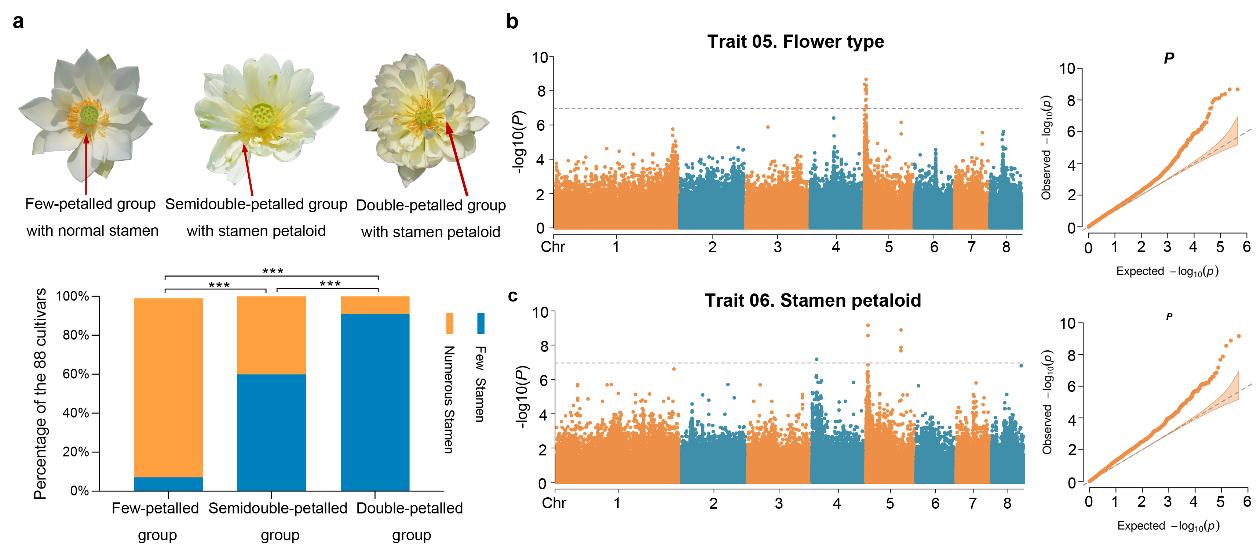The sacred lotus enjoys an astonishing diversity of floral traits, particularly petal number, color, and flower type. Previous studies have discussed the molecular mechanisms underlying a single trait for flower development based on transcriptomes and methylations, however, no systematic study has determined the genetic architecture of multiple correlated traits in a population using a genome- wide association study (GWAS) in lotus.
Researchers from Wuhan Botanical Garden investigated the genome resequencing and high- density single nucleotide polymorphism (SNP) markers of 88 'flower lotus’ cultivars with 12 well- recorded horticultural traits obtained in a common- garden condition to address the question of the genetic variants underpinning multiple crucial horticultural traits of this complex flower through GWAS.
Results unveiled explicitly a total of 149 candidate genes, including several pleiotropic genes (like NnKUP2) linked to SNPs that were significantly associated with the developmental and colorful variations of floral organs and plant size in a continuous distribution of lotus individuals. Moreover, a 2.75- kb presence- and- absence genomic variant fragment carrying seven transposons (TEs) (including three miniature inverted- repeat transposable elements (MITEs)) and two small- RNA- binding regions was found to significantly affect the formation of double- petalled flowers and stamen petaloid in lotus by interfering with nearby gene expressions (Petaloid- Related Formation, PRF gene). Additionally, this genomic variant fragment was also verified to be significantly associated with flower types and stamen petaloid by re- examining the 136 accessions with sufficient sequencing abundance from another published study.
This work provides insight into the genetic variations underlying remarkable diversity in complex traits of the lotus flower.
This work was funded by the Strategic Priority Research Program of Chinese Academy of Sciences (CAS), the Biological Resources Program, CAS, the National Natural Science Foundation of China, the Youth Innovation Promotion Association of CAS, and Bureau of Landscaping and Forestry of Wuhan Municipality.

GWAS of flower type and stamen petaloid (Image by GAO Zhiyan)
